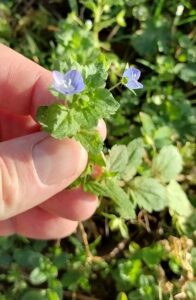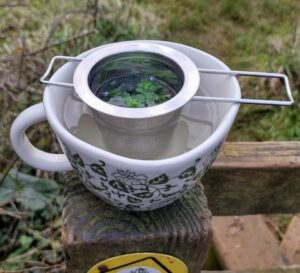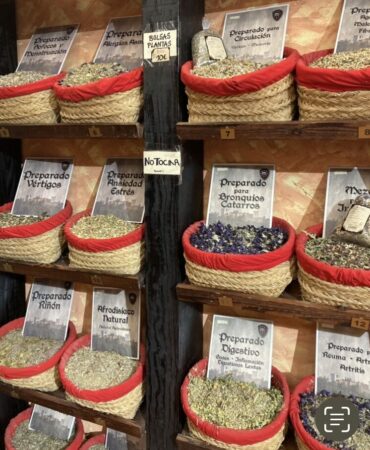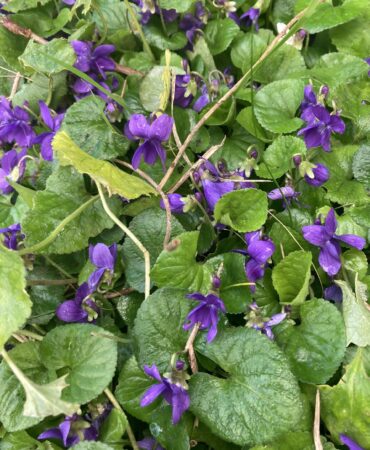Currently Empty: £0.00

Rediscovering an old friend: Speedwell (Veronica spp.)
Words by Neil Allies
Whatever the season, I find that there’s always something new in the plant world to surprise me, even in the most familiar of fields. Recently, I went for a walk on the Winter Solstice. It seemed fitting to get out into the countryside on the darkest day of the year, and I wasn’t expecting to find much, other than the odd Dandelion brightening up the dull and grey day. As I walked across a muddy path, I (literally) stumbled on a plant I’d never noticed before that was happily greening up an otherwise brown, muddy, field. After some quick research, I discovered that it was Speedwell (Veronica spp). To be honest, once I stopped and stared at the ground, I started to feel a bit silly that I had never seen this lovely plant before because, looking around, suddenly I saw it everywhere. It has a beautiful and delicate light purple flower, with striking vertical lines all around it. How lovely that it’s growing at the darkest time of the year!

I decided to do a bit of research. There are various species of Speedwells, including the Common field speedwell (Veronica persica), the Slender speedwell (Veronica filiformis) and the Health speedwell (Veronica officinalis). The species I had found was (I think!) the Common field speedwell. They all belong to the Plantaginaceae family, which also includes the wonderfully medicinal Plantain. However, very few of my modern Materia Medica books had any reference to it and Julian Barker, in his The Medicinal Flora of Britain and Northwestern Europe (Winter Press, 2001), outlines its disappearance from the herbal armoury, from its ‘heady days’ in the 16th and 17th Centuries (p. 408).
To try and discover more, I started with my normal go-to book, Geoffrey Grigson’s (1955) The Englishman’s Flora. Unfortunately, he does not have many nice things to say about this lovely looking plant! Amongst the various folklore he describes, he says that in Somerset (where I live), it is said that if you pick Speedwell, a bird will peck your eyes out and, in Germany, it was said that picking Speedwell will cause a storm (spookily, it did rain after both occasions that I picked it!). He finishes off by describing it simply as a “sinister little plant”.
The second book I went to, Maud Grieves’ (1931) A Modern Herbal, is far kinder. After a lengthy botanical description, she says that “old writers of all countries speak highly of the virtues of the Speedwell as a vulnerary, a purifier of the blood and a remedy in various skin diseases, its outward application being considered efficacious for the itch. It was also believed to cure smallpox and measles, and to be a panacea for many ills”. I always find it fascinating how plants come and go out of fashion. Just like Wood betony, once considered a prime herbal plant in the Medieval period (and one of my favourites!), but today rarely used medicinally. It’s funny how a single plant can attract such a range of comments, from the old saying “Sell your coat and buy Betony” to Grigson’s (again, rather unkind!) comment: “Betony is a fraud, with no outstanding virtue of any kind”.
Whenever I find a plant that is not much used nowadays, one of my favourite places to look is the book Wayside Medicine. Forgotten plants and how to use them by Julie Bruton-Seal and Matthew Seal (Merlin Unwin Books, 2017). And, in this book, I found an extolment of Speedwell’s virtues. As well as detailing its uses for a whole range of ailments, from coughs, sore feet and skin conditions, they also mention its role as a nervine, suggesting that it can restore and re-energise tired mental states. They even mention a 300-page monograph written on Speedwell in 1690 by Joahnnes Francke, called Polychresta Herba Veronica. Clearly this herb, which was completely unknown to me, was once well-respected by herbalists. Interestingly, despite Speedwell’s absence from a lot of the main reference books, tinctures and teas can still be bought from some of the main herbal suppliers and there is some research into the chemical constituents. For example, a research paper in 2019 found that the Veronica plants contained iridoid glycosides and phenolic compounds, particularly flavones and terpenoids (Salehi et al. (2019) Veronica Plants—Drifting from Farm to Traditional Healing, Food Application, and Phytopharmacology, in Molecules, vol. 24) Clearly, there is a lot to discover about these little plants!
In their book, Julie Bruton-Seal and Matthew Seal mention tasting a Speedwell tincture and say that it feels “like a spirit of goodwill that warms and wakens you up – not just in the heart, but the body as a whole”. They then suggest trying Speedwell tea yourself: “chances are you will experience similar sensations”. Well, challenge accepted! A few days later, I harvested some fresh aerial parts and made an infusion out in the field of its flowers and leaves. After leaving it to infuse for about ten minutes, the tea produced was a lovely, light, amber colour. It tasted quite sweet and was a very light tea, that was pleasant to drink. Personally, I thought that it had a slight metallic taste to it, perhaps due to its iron and vitamin content.

How lovely that a plant like Speedwell is not only growing at this darkest time of the year, but whose actions are exactly what’s needed to help ease the tensions and stresses so many of us can experience in the winter months. For me, it’s yet another example of Nature offering us what we need, when we need it most. It’s also another great example of how there is always so much more to learn about what herbal medicine can offer. I’d like to explore Speedwell more and my next step is to make a Speedwell tincture. It might be just the thing to replace the (fast running out!) Elderberry tincture I’ve been taking over the winter months, and just what’s needed to help me renew my focus and energy for the New Year and plans for 2024.




